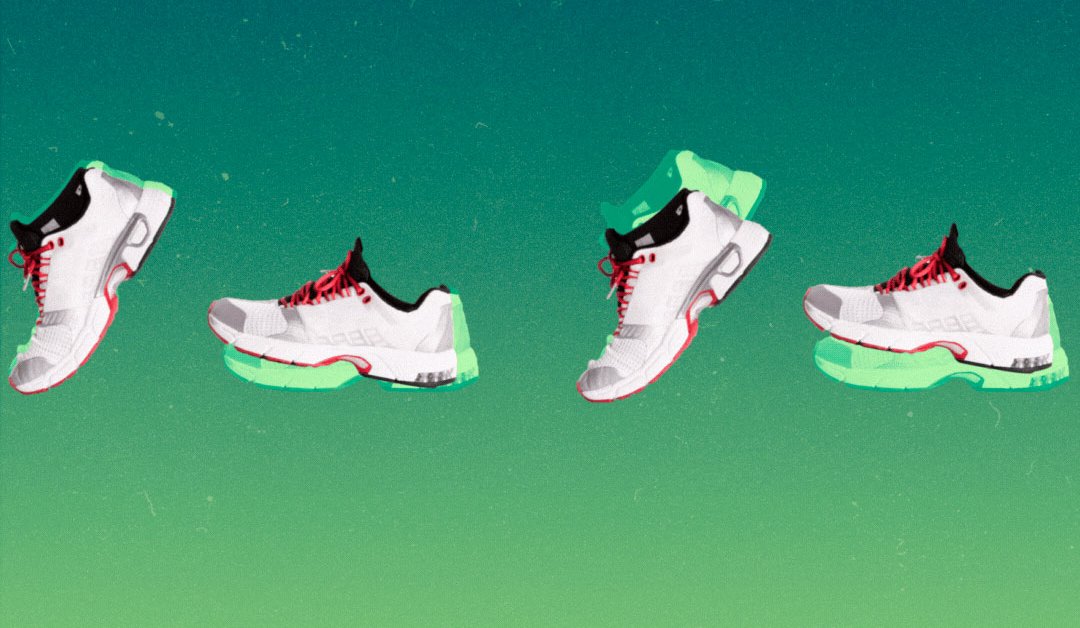Does Tanning Burn Calories And Fat?


Many people wonder if tanning can help with weight loss by burning fat and calories. It’s a common question with a straightforward answer: tanning itself does not significantly impact calorie or fat burning.
However, there’s an interesting point to discuss about the blue light from sunlight, which might influence fat cells in a unique way.
In this post, we’ll explore this relationship and what it means for those looking to manage their weight. Join us as we break down the facts about tanning and its effects on fat burning.
Understanding Tanning and Calorie Burn
Tanning is the process by which the skin darkens or tans due to exposure to ultraviolet (UV) light, either from the sun or artificial sources like tanning beds. This happens because the skin produces more melanin, a pigment designed to protect deeper layers from UV damage.
When it comes to burning calories, our body’s basal metabolic rate (BMR) plays a key role. BMR is the rate at which your body uses energy while at rest to maintain vital functions such as breathing and maintaining body temperature.
Tanning involves lying still, usually in a relaxed state, which means your BMR remains at its base level. This resting state does not require significant energy, so while your body does burn some calories to maintain basic functions, the amount is minimal.
It’s important to differentiate between calories burned through physical activity and those burned through passive activities like tanning. Active calorie burning occurs during physical activities like walking, running, or swimming, where the body’s demand for energy increases significantly compared to its resting state.
Passive heat exposure, such as sitting in the sun or a tanning bed, does not significantly increase the body’s energy demands in the same way. Although the body might use a small amount of energy to regulate its temperature under the sun, this is not comparable to the energy used during active exercise.
Understanding this distinction helps clarify why tanning is not an effective method for those looking to significantly impact their weight loss through calorie burning.
The Myth of Fat Burning through Tanning
When it comes to tanning, whether from sunlight or sunbeds, many wonder if this relaxing activity can also double as a fat reduction method. Let’s address some common questions and look at what research has to say about the connection between tanning and fat burning.
Does Tanning Burn Fat or Belly Fat?
No, tanning does not burn fat, including belly fat. The process of tanning involves increasing melanin in the skin to protect against UV rays, which does not require significant energy expenditure that would lead to fat loss.
Fat reduction generally requires creating a caloric deficit or engaging in increased physical activity, both of which significantly raise energy expenditure far beyond what passive tanning achieves.
Do sunbeds burn fat?
Like natural sunlight, sunbeds primarily affect the skin’s melanin production and do not impact fat cells enough to cause weight loss. The heat or UV exposure from sunbeds does not increase calorie burn in a way that would lead to fat reduction.
Scientific Insights and Misconceptions
One interesting study from the University of Alberta sheds light on the effects of blue light, a component of sunlight. This research found that exposure to blue light could shrink the lipid droplets in fat cells located just beneath the skin’s surface.
Although these findings are intriguing, they are of academic interest and do not provide a practical or safe method for fat loss through sun exposure or tanning. This type of light exposure was not shown to have a significant impact on overall body fat and certainly should not replace more proven methods like diet and exercise.
Furthermore, this study opens up discussions about the potential seasonal impacts on body fat, especially considering winter weight gain. During winter, reduced exposure to sunlight—and consequently to blue light—might influence body fat storage, suggesting a seasonal variation in how our bodies manage fat. However, more research is needed to fully understand this seasonal effect and its practical implications for weight management.
It’s important to keep your expectations realistic when it comes to tanning. While getting some sun can boost your vitamin D levels and offer other health perks, it doesn’t significantly help with burning fat. Believing that tanning can aid in weight loss might lead to frustration and divert attention from more effective weight management methods.
Keep your expectations about tanning realistic: while it can enhance vitamin D levels and offer health benefits, it doesn’t effectively burn fat. Relying on tanning for weight loss can lead to disappointment and distract from more effective weight management strategies.
Calories Burned While Tanning
When it comes to tanning, whether it’s lying under the sun or in a tanning bed, the amount of calories burned is relatively low. Tanning is essentially a passive activity with minimal physical exertion, so the calorie burn during this time is not significant.
How Many Calories Are Burned During Tanning?
While exact figures can vary based on individual metabolic rates and body composition, estimates suggest that lying still, whether indoors or outdoors, burns calories at a rate similar to what one would burn while sleeping or resting.
Typically, this could range from about 40 to 60 calories per hour. This low level of calorie expenditure is due to the body maintaining its basic life-sustaining functions at rest, known as the basal metabolic rate.
For context, while tanning might burn about 40 to 60 calories per hour, engaging in activities like walking and jogging can burn significantly more—ranging from 180 to 700 calories per hour, depending on the intensity.
The takeaway here is clear: if your goal is to burn calories and potentially lose weight, engaging in physical activities will be much more effective than relying on passive tanning. Tanning should not be considered a method for weight loss or significant calorie burning. It’s important to prioritize active lifestyles and maintain regular physical activities for health and fitness.
The Role of Sun Exposure in Metabolism
Sun exposure does have some indirect effects on metabolism, which can be quite intriguing. When we think about metabolism, it’s not just about how quickly we burn calories, but also how our bodies handle energy production and regulation.
Can Sun Exposure Influence Metabolism?
Indeed, sunlight can influence our metabolism, but not directly through tanning. The key player here is vitamin D, which our skin synthesizes when exposed to sunlight. Vitamin D has several roles in the body, including supporting bone health and aiding the immune system.
More interestingly, it’s also involved in metabolic processes. Adequate levels of vitamin D are linked to a better-regulated metabolism, which can indirectly support weight management. For more detailed information on vitamin D and metabolism, this source provides a comprehensive overview.
However, the process of getting a tan—lying in the sun or a tanning bed—does not in itself boost metabolism. The warmth you feel while tanning does not equate to an increase in metabolic rate in the same way that physical exercise does.
Connection Between Thyroid Function and Sunlight Exposure
The thyroid gland, which plays a crucial role in regulating metabolism, may also be influenced by sunlight exposure. Research has shown that UV light can affect thyroid function indirectly.
For instance, UV exposure has been linked to alterations in thyroid-stimulating hormone levels, which could impact overall thyroid health and metabolic rate.
The details of how UV exposure can affect the thyroid are still being studied, and findings suggest a complex interaction that might contribute to metabolic regulation. A study discussing this can be found here.
Under What Circumstances Could Tanning Affect Metabolism?
While tanning itself doesn’t boost metabolism, some studies suggest that the light from the sun, particularly UVB light, may influence metabolic functions beyond just vitamin D synthesis, such as affecting how the body regulates blood sugar and fat storage.
However, these effects are still being researched, and it’s too soon to count on sunbathing as a method to enhance metabolic health. Relevant research on UV light and metabolic effects can be explored here.
In essence, while sunlight supports a healthy metabolism through vitamin D production, tanning should not be considered a direct method to boost metabolic rates.
Health Risks and Safe Tanning Practices
While tanning might offer a pleasing glow and boost vitamin D levels, it’s crucial to be aware of the risks associated with UV exposure. Excessive exposure to ultraviolet rays can lead to several health issues, including skin cancer and premature aging.
Understanding the Risks
- Skin Cancer: UV radiation is a known carcinogen. Frequent tanning, whether under the sun or in tanning beds, increases the risk of developing skin cancers such as melanoma, basal cell carcinoma, and squamous cell carcinoma.
- Aging Effects: UV rays can accelerate the aging process of the skin, leading to wrinkles, leathery skin, and sunspots. This is due to the breakdown of collagen and damage to skin cells from prolonged UV exposure.
Safety Tips for Tanning
If you choose to tan, taking precautions can help minimize the risks:
- Use Sunscreen: Always apply a broad-spectrum sunscreen with an SPF of 30 or higher, even if you’re using a tanning bed. Reapply every two hours, or more frequently if swimming or sweating.
- Time Your Exposure: Avoid sun exposure during peak hours (10 AM to 4 PM) when the UV rays are strongest. Opt for early morning or late afternoon sessions if you’re tanning outdoors.
- Wear Protective Clothing: A hat, sunglasses, and long-sleeved shirts can provide extra protection against UV rays.
- Hydrate and Monitor Time: Stay hydrated and set a limit on how long you spend tanning to reduce the risk of overheating and sunburn.
- Avoid Tanning Beds: Consider alternatives to tanning beds, such as self-tanning products or spray tans, which don’t involve UV exposure and are safer for your skin.
By understanding these risks and taking appropriate precautions, you can enjoy the benefits of sun exposure without compromising your health. Always remember that moderation is key in all forms of sun exposure.
Healthier Alternatives for Fat Loss and Weight Management
For those looking to manage weight and improve health, there are much more effective and safer methods than tanning. Incorporating regular exercise and making dietary changes are foundational steps that offer significant benefits over tanning.
Exercise
Regular physical activity is one of the most effective ways to increase calorie burn and reduce body fat. Activities can range from walking, cycling, and swimming to strength training and yoga. These not only help burn calories but also improve cardiovascular health, enhance muscle strength, and boost overall well-being.
Diet
Adopting a balanced diet that includes a variety of nutrients can significantly aid in weight management. Focus on incorporating more fruits, vegetables, lean proteins, and whole grains into your meals. Reducing intake of processed foods, sugars, and high-fat items can lead to gradual, sustainable weight loss.
Small Lifestyle Changes
- Stay Active: Even outside of scheduled workouts, try to stay active throughout the day. Simple changes like taking the stairs instead of the elevator can add up.
- Hydrate: Drinking enough water is essential for metabolism and helps reduce overeating.
- Portion Control: Eating smaller portions can help control calorie intake without the need for drastic dietary changes.
These methods not only contribute to fat loss but also improve long-term health outcomes, which tanning cannot provide. Building these habits gradually can lead to lasting changes in your health and wellness, far outweighing any perceived benefits from tanning.
Conclusion
Tanning does not significantly contribute to fat burning or calorie expenditure. Instead, healthier habits such as regular exercise and a balanced diet are far more effective for weight loss and improving overall health.
While tanning might enhance your appearance with a sun-kissed glow, it’s not a viable method for weight loss. Focus on active living and nutritious eating to manage your weight and boost your well-being far beyond the superficial benefits of tanning.





